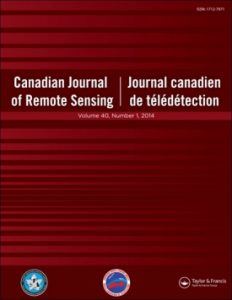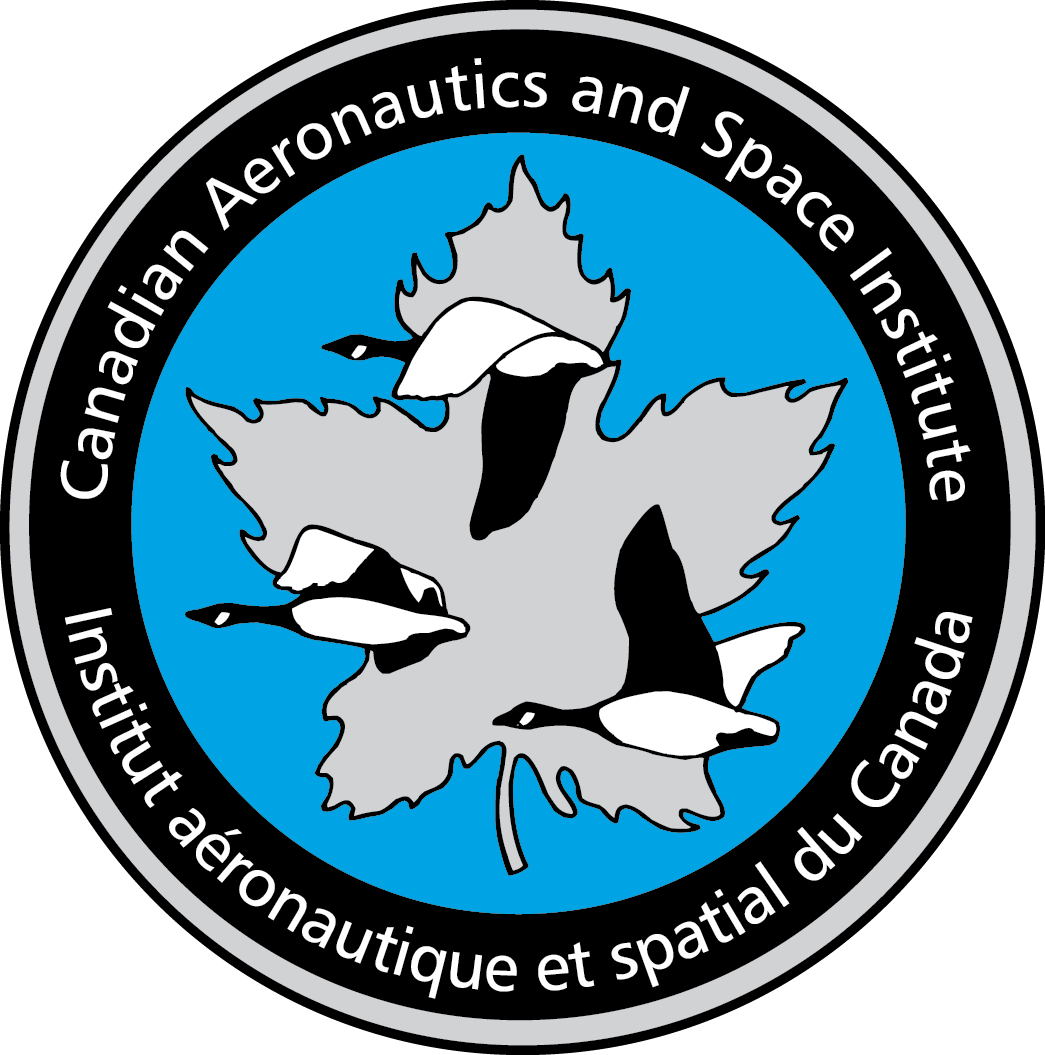Canadian Aeronautics and Space Institute Institut aéronautique et spatial du Canada |
Canadian Journal of Remote Sensing
 Published by Taylor and Francis Online: The Canadian Journal of Remote Sensing /Journal canadien de télédétection (CJRS-JCT) is a publication of the Canadian Aeronautics and Space Institute (CASI) and the official journal of the Canadian Remote Sensing Society (CRSS-SCT). The Canadian Journal of Remote Sensing provides a forum for the publication of scientific research and review articles. The journal, published since 1974, has seen consistent growth in content over the past few years, and is converting to the Open Access model from its 2023 volume. This move to Open Access will ensure that moving forward, CJRS-JCT continues to publish the latest multidisciplinary research in remote sensing and makes its content freely available to all. Taylor & Francis will continue to provide access to previous volumes through a Pay to Read model.
Published by Taylor and Francis Online: The Canadian Journal of Remote Sensing /Journal canadien de télédétection (CJRS-JCT) is a publication of the Canadian Aeronautics and Space Institute (CASI) and the official journal of the Canadian Remote Sensing Society (CRSS-SCT). The Canadian Journal of Remote Sensing provides a forum for the publication of scientific research and review articles. The journal, published since 1974, has seen consistent growth in content over the past few years, and is converting to the Open Access model from its 2023 volume. This move to Open Access will ensure that moving forward, CJRS-JCT continues to publish the latest multidisciplinary research in remote sensing and makes its content freely available to all. Taylor & Francis will continue to provide access to previous volumes through a Pay to Read model.
The journal publishes topics including sensor and algorithm development, image processing techniques and advances focused on a wide range of remote sensing applications including, but not restricted to, forestry and agriculture, ecology, hydrology and water resources, oceans and ice, geology, urban, atmosphere, and environmental science. Articles can cover local to global scales and can be directly relevant to the Canadian, or equally important, the international community. The international editorial board provides expertise in a wide range of remote sensing theory and applications. Articles can be published in English or French. All papers are published with an abstract and their title in both languages.
All manuscripts require favourable peer review prior to acceptance for publication. All manuscript submissions are subject to initial appraisal by the Editor, and, if found suitable for further consideration, to peer review by independent, anonymous expert referees. All peer review is single blind, and submission is online via the submission portal of Taylor & Francis for CJRS_JCT: https://rp.tandfonline.com/submission/create?journalCode=UJRS
Article Publication Charges
Since 31st May 2022, authors who submit to the Canadian Journal of Remote Sensing are required to pay, if their article is accepted, an Article Publishing Charge (APC), which can be covered by an author’s funder or institution.
Members of the Canadian Aeronautics and Space Institute (CASI) and the Canadian Remote Sensing Society (CRSS-SCT) can publish their article Gold Open Access for a reduced article publishing charge (APC) of 1,449 USD/ 1138 GBP / 1320 EUR, which represents a discount of 30% on the standard APC. Please provide your member discount code when generating your quote.
Instructions for Authors
Please visit Taylor and Francis for Instructions for Authors. All peer review questions should be directed to ujrs-peerreview@journals.tandf.co.uk.
Access to Articles Published in Previous Volumes
For more information regarding publications, contact publications@casi.ca. Members of Canadian Aeronautics and Space Institute (CASI) can receive free access to all 48 volumes published prior to 2023 here.
Members of the Canadian Remote Sensing Society can gain free access to all 48 volumes published prior to 2023 here.
Non-members of CASI or CRSS can have access to previous volumes through a Pay to Read model. Presently, a 48-hour access to the PDF of non-Open Access article (the PDF can be downloaded and printed) and to the online version of a given article at a cost of USD 55.00.
Guidelines for Associate Editors
The Associate Editors are recognized for their scientific skills and their publication records in their fields of expertise and have volunteered their efforts for the benefit of CJRS. The Associate Editors perform the following main functions:
- Select reviewers and make review recommendations to the Editor-in-Chief, as and when required
- Pro-actively solicit input for CJRS
-
- by organizing Special Collections
- contributing a review article
- promoting CJRS among colleagues
- soliciting contributions from colleagues
- Review and contribute to the development of Editorial Board policies and of the journal, etc.
- Comment upon and approve all Special Issue proposals.
- Recommend nominations for the CJRS Best and Second-Best Paper Award to the CRSS Awards Committee and prepare a citation.
Guidelines for Guest Editors
A Guest Editor leads a Special Collection initiative by invitation or proposal. All Special Collection projects are subject to approval by the Editorial Board. Special Collections could be published as a dedicated Special Issue or as a Special Section within an issue. Content may be derived from Canadian Remote Sensing Society symposia, workshops or symposia of appropriate subject matter, or collected thematic papers in an individual’s area of expertise.
Guest Editors are usually responsible for all aspects of the review process for their particular Special Collection initiative, including the solicitation of manuscripts, the selection of reviewers, and communications with reviewers through ScholarOne ManuscriptTM. These functions can be carried out in collaboration with other members of the Editorial Board. In addition to overseeing the peer-review process, Guest Editors should prepare a directed call for papers as well as the Editorial Note for their Special Collection.
Guidelines for Reviewers
The CJRS peer review process is anonymous. Reviewers are selected according to their expertise in the field of the submitted paper and, as much as possible, on their past performance in providing a timely and serious review. Their task is twofold: to determine whether the paper under review has any serious technical or theoretical flaws, and then to judge its originality in terms of research risk. This is facilitated through completion of the CJRS Manuscript Review Form and by providing detailed constructive comments for the author’s benefit and to improve the paper. It should be noted that a detailed review of grammar and style is not essential. The usual time frame to complete a review is three weeks after receipt of the review package. Reviewers are always contacted in advance via e-mail to ensure that the topic is relevant to their field of expertise and that the required time frame can be met. They should immediately contact the Associate Editor if they find that they will be unable to meet the deadline date. Reviewers should be aware of the types of papers published in CJRS; it is within their mandate to re-categorize a paper that does not meet the appropriate standards.
The Canadian Remote Sensing Society and the Editorial Board are greatly indebted to those individuals who spend the time and effort to provide a conscientious review. This is a significant task that goes largely unrewarded and can only be justified given the individual reviewer’s dedication to the pursuit of scientific quality.Guidelines for Authors
Types of Papers
All papers published in CJRS are subject to peer review by at least two reviewers. There are three main types of papers that are considered for publication.
Research Article
A Research Article is the most common type of manuscript submitted to CJRS. Peer-reviewed research in remote sensing applications and methodology involves original contributions that apply the scientific method to new problems involving the acquisition, processing, validation, and interpretation of remotely sensed data and/or its application within a geographic context. These contributions must be more than a collection of accepted or previously published facts: they must be the proof or rejection of a hypothesis; research risk must be involved.
In observational sciences such as remote sensing, the risk may be difficult to perceive since papers might test or compare known or previously published methods on new or old data sets or might consider new sensors of fundamentally similar design. In these cases, the acid test for peer reviewed approval is whether the authors (i) apply appropriate, pertinent, and innovative testing/evaluation procedures or tools and (ii) provide methodological or applications insight which enhances understanding beyond a mere observational presentation of data.
Research Note
A Research Note is usually a shorter contribution than a Research Article. They are normally comprised of up to 6 double-spaced pages with up to 4-6 accompanying figures. This is original work which shows potential and innovation, but where it may be too early to perform a comprehensive validation.Review Paper
A Review Paper is a review of an application or methodology that is often made by a senior researcher who has the capacity to analyze the theoretical and experimental ramifications of previous research with a global perspective. This unique viewpoint should contribute to a clear understanding and synthesis of past work and provide innovative guidelines as to which directions future research should or will take. Typically, it should delineate (or extrapolate to) an algorithm, methodology, or process that best synthesizes and generalizes previous work. This type of contribution is not intended to be a bibliographic summary or a tutorial. It is also not intended as a forum for reviewing remote sensing policy issues or for projecting organizational trends.Editorial Board
| Position | Incumbent | Organisation |
|---|---|---|
| Editor-in-Chief |
Monique Bernier |
INRS |
| Past Editor-in-Chief |
N.C. Coops |
University of British Columbia |
| Associate Editors |
A. Berg |
University of Guelph |
|
J.M. Chen |
University of Toronto | |
|
X. Guo |
University of Saskatchewan |
|
|
J.R. Harris |
Geological Survey of Canada | |
|
S. Homayouni |
Inst. Nat. Recherche Scientifique | |
|
C. Hopkinson |
University of Lethbridge | |
|
B. Leblon |
University of New Brunswick | |
|
C. Li |
Central China Normal University (CCNU) | |
|
J. Li |
University of Waterloo | |
|
T. Lukowski |
Ontario, Canada | |
|
D.R. Peddle |
University of Lethbridge | |
| J. Rogan | Clark University | |
| A. Roy | U. du Québec à Trois-Rivières | |
| R. Scharien | University of Victoria | |
|
A. Trishchenko |
Canada Centre for Remote Sensing |
|
|
R. Wang |
University of Calgary | |
| H.P. White | Canada Centre for Remote Sensing | |
|
G. Zulin |
University of Saskatchewan |
Continue to Canadian Journal of Remote Sensing
